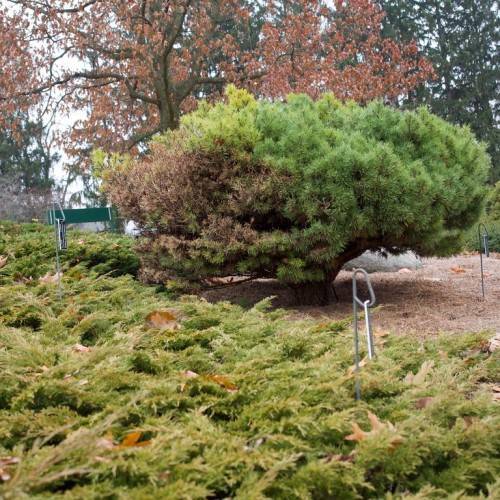
Scotch pine
Pinus sylvestris 'Nana Compressa'
Cycle:
Perennial
Watering:
Average
Hardiness Zone:
2 - 7
Flowers:
Flowers In Spring
Sun:
Full sun
Soil:
Acidic, Well-drained
Cones:
Yes
Leaf:
Yes
Growth Rate:
Moderate
Maintenance:
Low
Drought Tolerant:
Yes
Care Level:
Medium
watering
Scotch pine should be watered once a week or every 5-7 days, providing approximately 0.5 to 1 gallon of water per plant. Avoid over-watering and check the soil moisture before watering. If the soil is dry before the set watering schedule, then water the plant more often. The soil should be kept moist but not soggy or water-logged. If the area is experiencing dry weather, then increase the amount of water slightly.
sunlight
Scotch pines (Pinus sylvestris 'Nana Compressa') grow best in full sunlight, with approximately 8-14 hours of sunshine each day. These evergreens thrive in an area that gets the strongest light during the day, with no shade. Scotch pines should be planted in an area that has morning sun, but is shaded from the afternoon. Early morning sun helps to keep the needles of the tree lush, and provides necessary warmth to keep the soil from freezing. Additionally, Scotch pines should be planted in a location that is sheltered from strong winds, as these can stress the tree's leaves and branches.
pruning
Scotch pine (Pinus sylvestris 'Nana Compressa') should be pruned in late winter or early spring. It is best to remove dead or diseased branches as soon as they are noticed. This can be done anytime of the year but wait until the extreme cold of winter has passed before doing major pruning. If pruning in late winter/early spring, aim to remove no more than 1/3 of the total branches in a year to prevent stress to the plant. If possible, only remove secondary branches that can be easily seen. If the shrub has become too large and overgrown, more drastic pruning can be done, but should be done over the span of 2 to 3 years.
